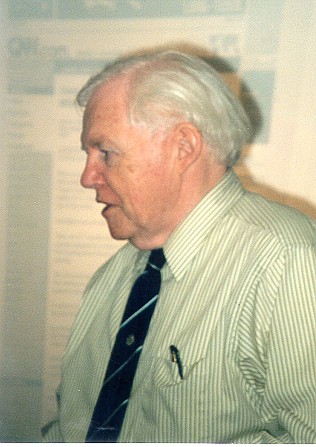Jerry Connor recently visited the Lodge on several occasions, collaborating with the WIT researchers in a series of initiatives. Jerry is Professor of Civil and Environmental Engineering at MIT and has been a Director of WIT since the creation of the Institute. Furthermore he helps to run the Group Office in Boston, Massachusetts.

Prof. Jerry Connor
Jerry participated in a series of meetings to define the Strategy of the Institute over the next few years and held discussions with different researchers, advising some of the PhD students as well as the Head of the Damage Mechanics and Fluid Mechanics Divisions.
He lectured on the topic of "Structural Motion Control" and showed some interesting applications of this new idea in Civil Engineering. Current interests in motion-based design is leading to changes in building codes and more emphasis on improving the structures under phenomena such as earthquakes and wind loading.
The new design philosophy involves the use of energy dissipation devices such as passive viscous dampers and active control systems, and considers both stiffness and damping as independent design parameters. A high level of damping is particularly important in the case of earthquakes. Substantial progress in structural motion control has been made since the Kobe earthquake, which demonstrated that buildings with base isolation were more capable of surviving extreme earthquakes.
A new industry has been created regarding the development of damping mechanisms and base isolation systems, which can be incorporated in the structures.
Jerry presented some interesting applications during his lectures and referred to the case of the Millennium Bridge in London, the structural behaviour of which has now been changed using dampers and added masses.
Jerry is co-author with Klink of a popular book called "Introduction to Motion-based Design" published by WIT Press (ISBN 1-85312-454-0), priced at £95.
Jerry's book bridges the gap between conventional structural design and the field of motion-based design and provides a basis for the preliminary design of motion-sensitive structures. The work presents a systematic outline of the basic concepts, computational procedures and behavioural issues for structural motion control. Examples illustrate the application of the motion-based design paradigm to a wide range of buildings are included in the book.
For further information about any of the activities taking place at Wessex Institute of Technology, please email: This email address is being protected from spambots. You need JavaScript enabled to view it. or contact us at the address following:
Wessex Institute of Technology
Ashurst Lodge
Ashurst
Southampton SO40 7AA, UK
Tel: 44 (0) 238 029 3223
Fax: 44 (0) 238 029 2853

 Wessex Institute
Wessex Institute